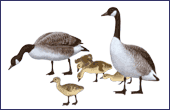Recognize a proper noun when you see one.
Nouns name people, places, and things.
Every noun can further be classified as common or proper. A proper noun has two distinctive features: 1)
it will name a specific [usually a one-of-a-kind] item, and 2) it will begin with a capital letter no matter where it occurs in a sentence.
Check out the chart below:
Read the following sentences. Notice the difference between the common and proper nouns.
Common Noun
Proper Noun
writer
teacher
beagle
cookie
city
restaurant
document
schoolHerman Melville
Mrs. Hacket
Snoopy
Oreo
Orlando
Tito's Taco Palace
Declaration of Independence
University of Southern California
Tina offered Antonio one of her mother's homemade oatmeal cookies but only an Oreo would satisfy his sweet tooth.
Cookies = common noun; Oreo = proper noun.
Charlie had wanted an easy teacher for his composition class, but he got Mrs. Hacket, whose short temper and unreasonable demands made the semester a torture.Teacher = common noun; Mrs. Hacket = proper noun.
Gloria wanted to try a new restaurant, so Richard took her to Tito's Taco Palace, where no one dips into the hot sauce until the drinks have arrived at the table.
Restaurant = common noun; Tito's Taco Palace = proper noun.
